
July 10, 2023 Miramichi Salmon Fishing Report
Fishing Friends:
I’m recently back from a month on the SW Miramichi in Blackville. I never missed either a morning or evening session for 30 straight days, and even my hands are sore from repetitive casting. The lowest water that we experienced during the entire time was 1.1 M on the Blackville gauge which is still relatively high water. Far more often the level was 1.5M or more. I’ve seen much higher levels after big storms, but the levels this June and early July are the most consistently high levels anyone can remember.
For all of June and the first few days of July the water was not only high but cold. It was 49F as late as the third week in June. We have gotten by the recent heat wave and temps are forecast as normal with showery, cloudy weather that will keep temps down.
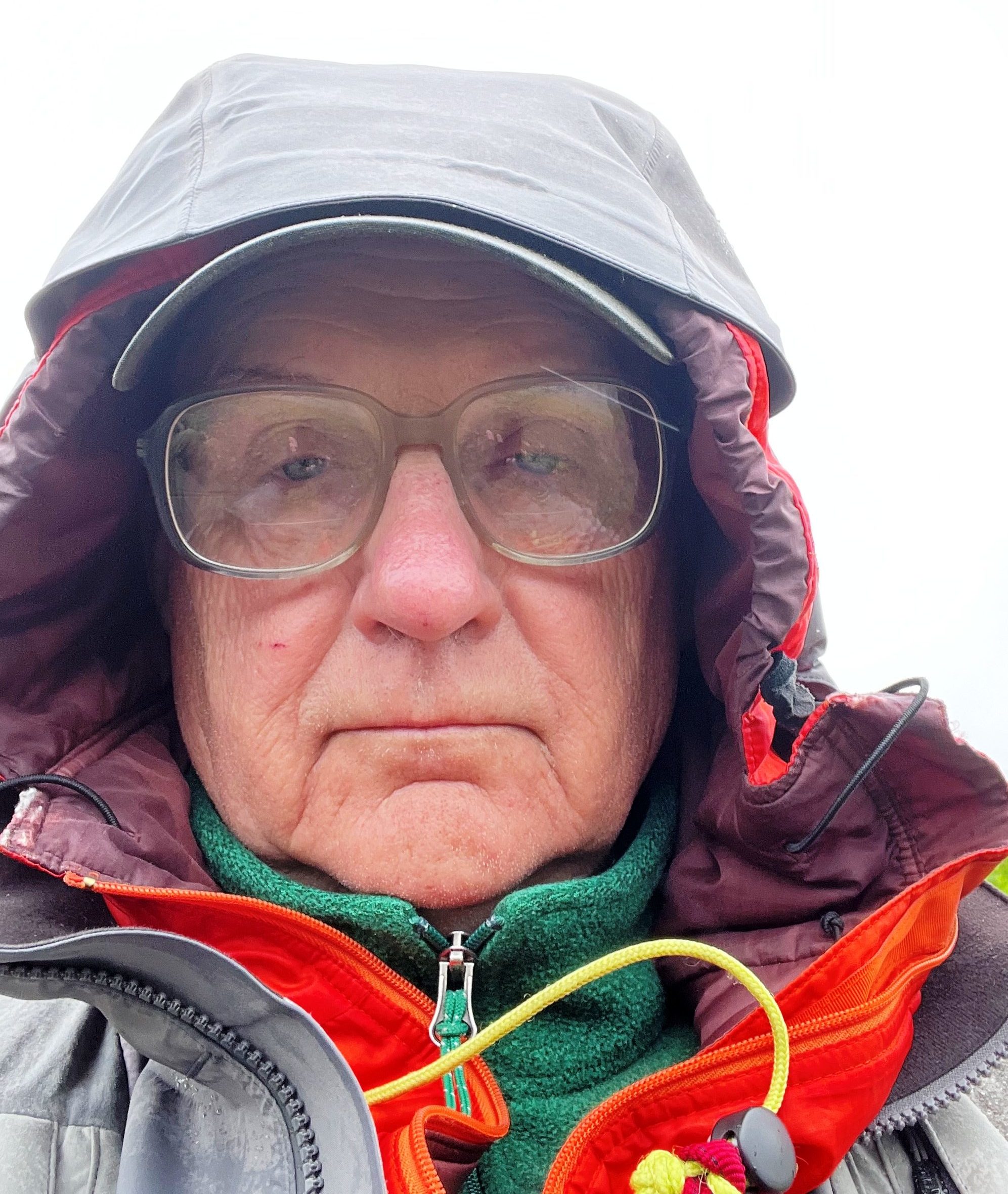
That’s me dressed against the cold, damp, Miramichi weather of early June. What a change a month can bring.
So how do the salmon react to this constant flow of high, relatively cool water? Many of them will just continue swimming upstream, ignoring for more than a brief pause the lower river holding pools that they might normally occupy. Every report that I got recently, including from places like Rocky Brook – which most of us think of as far upriver – talks about the fish moving well beyond that point up into headwaters areas. This is even true on the Cains. Byron Coughlan of Country Haven told me today that they are catching salmon up the Cains in Shinnickburn – an area that seldom sees any number of fish until the very end of summer. These upstream areas don‘t see much early season fishing pressure, and they stay relatively cool all summer long, so it is really great for the salmon themselves.
I’ve often wondered just how many of the fish going by actually reveal themselves by rolling or jumping. After 20 years of watching the Miramichi I don’t know the answer any better than when I started. I would definitely say that if you don’t see any fish then there probably aren’t many “on the go.” This June, though, we found enough fish surprising us here and there in the pools so that I’m confident there were many more around than we actually saw, and we saw quite a few almost every session.
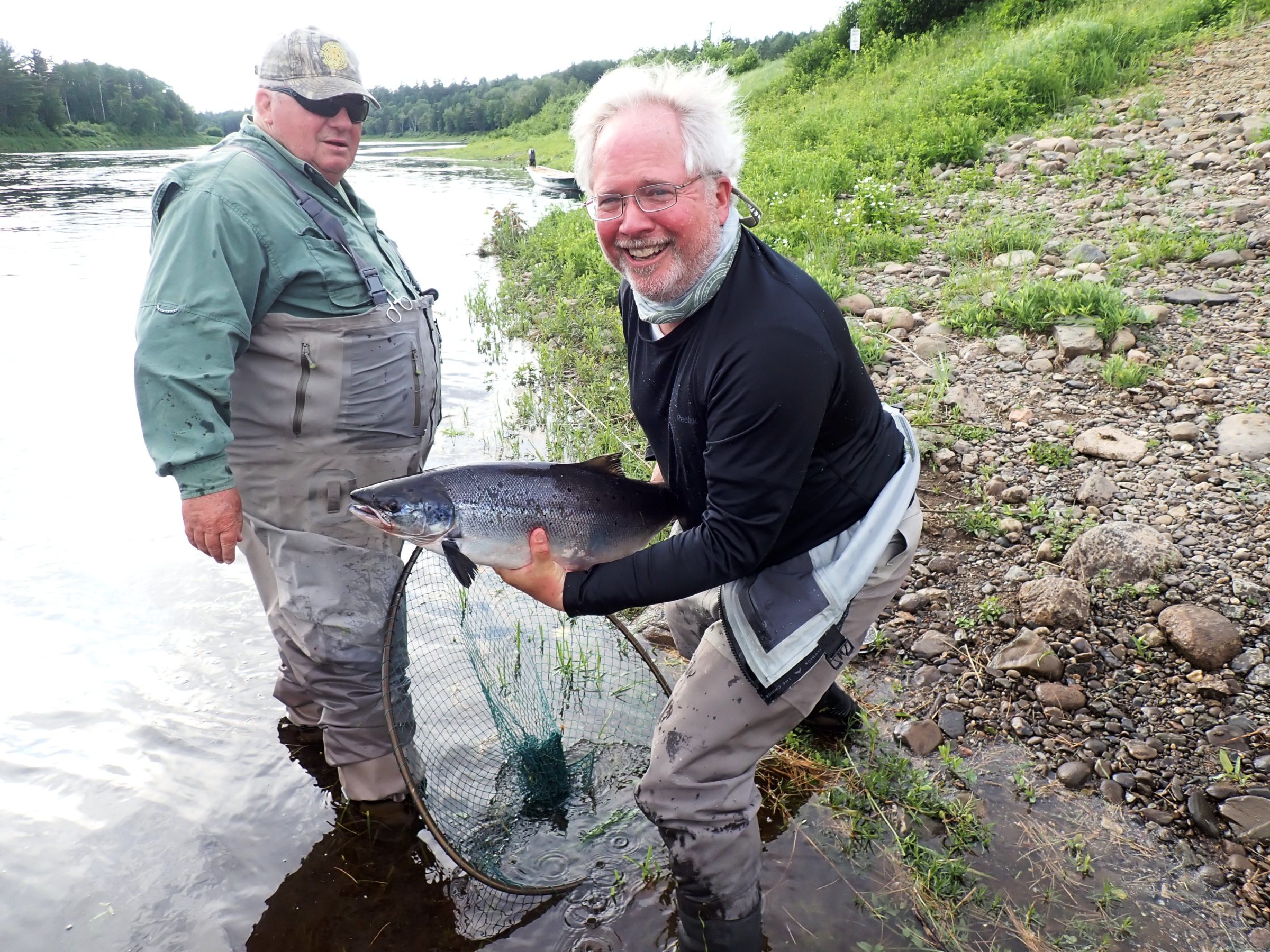
Andy Dumaine is happy with this salmon. He got one at Upper Oxbow on the NW before coming over that was estimated at 18 pounds.
There is a small circle of old friends of mine who have been coming up to Campbell’s to fish with me for years. Uniformly these men told me that during this June and early July fishing that they saw more salmon in 2023 than they remembered in previous seasons. So were there in fact more?
The Millerton and Cassilis trap number counts through June 30 were very low. The Millerton count was 29 compared to 96 last year. The 29 number is lower than any period average in modern times except for the 2005 through 2009 average which was just 24. But wait! 2005 through 2009 were great salmon years. The annual total average was 751 for those years compared to around 400 in recent years.
The June 30 Millerton trap number itself is normally around 10 to 15% of the annual total, but in 2005/2009 it was just 4%. So the low, estuary trap numbers to date are by no means conclusive. Also, to put all these numbers in context, don’t forget that the average salmon catching efficiency of the Millerton trap is just 5% to begin with – so the roughest estimate is to multiply the counts by 20. That 5% efficiency varies from year to year based on height of water and probably other conditions that we don’t really understand. I believe what I see, and what we rolled,
hooked, etc. According to that measure there were more fish in early 2023, in the SW Miramichi, than in most years that I remember. The NW and its tributaries, from what I hear have not fared as well, though accounts vary considerably.
Another measure would be the barriers in both the Dungarvon and the NW Miramichi. Unlike trap nets barriers count every fish that is coming up the river. On the Dungarvon the total salmon count – all sizes – through July 9 is exactly equal to last year at this time. Dungarvon grilse numbers are up by 30%. That may be important because it indicates survival of a recent year class. The NW, though, is down on the season to date by an astounding 85% percent with only 23 salmon and grilse reaching the barrier in 2023 compared to 129 last year. The sea run brook trout returns in the NW are also down by over 50% while they are up by 30% in the Dungarvon. This is clearly a very concerning situation. Is there time for the NW to turn around in 2023? It seems unlikely since at these barriers 60% of the run for the year is usually in by this time.
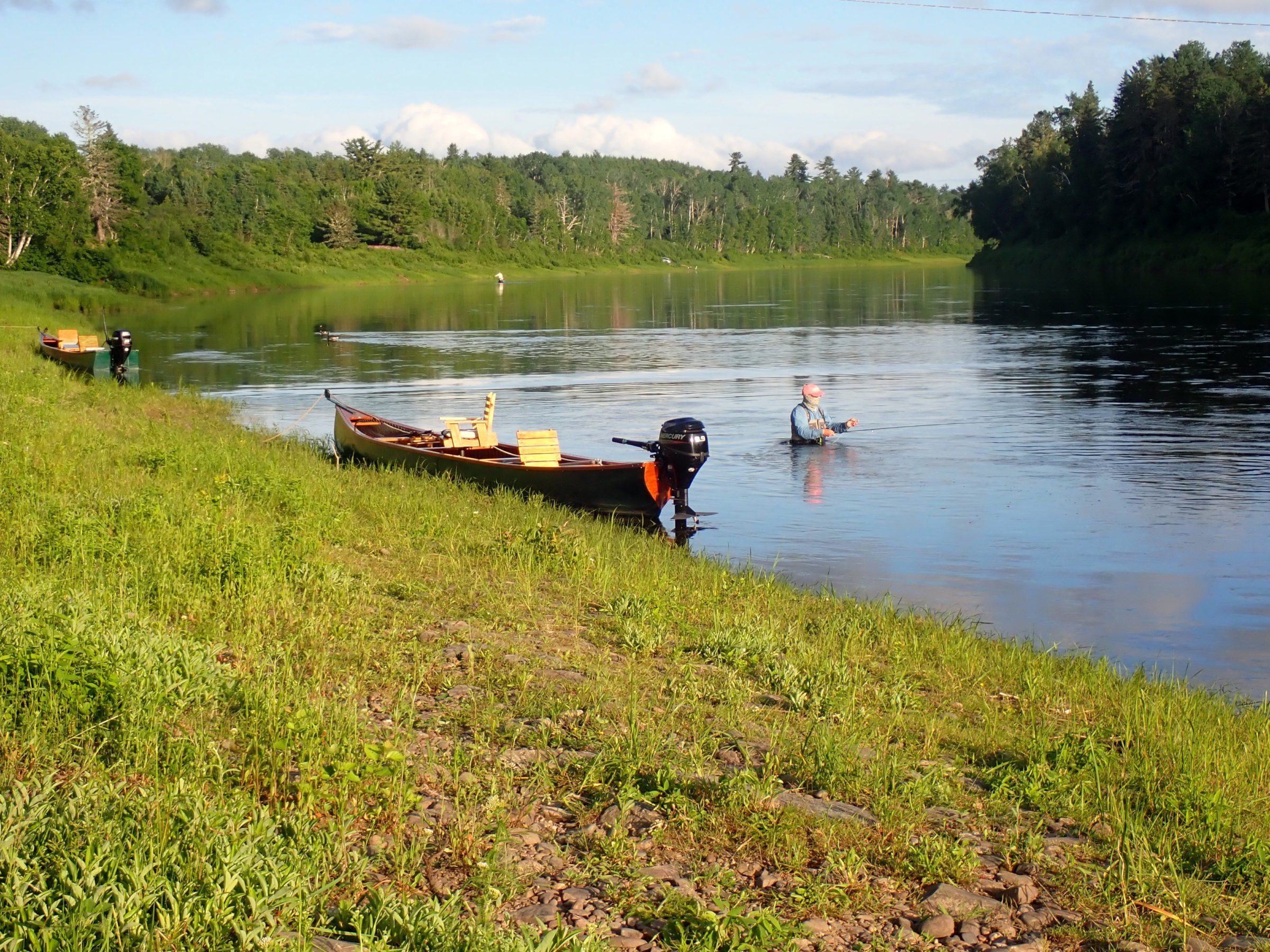
An angler wades in Campbell’s Pool. Anglers were fishing in both the pool upriver and the one below. The participation up and down the river and in all the tributaries is tremendous and very important to the economy of the Province of NB.
Is the problem just too many striped bass? Both the SW and the NW are catch and release salmon fisheries. There is poaching on both branches, and the NW also supplies First Nations with a food fishery. There is still some level of stocking going on in the SW system. In spite of the advice of the University of New Brunswick’s top scientific minds DFO and the Atlantic Salmon Federation managed to convince First Nations that stocking of any kind was bad. As one top scientist told me, that position isn’t science, it is just personal prejudice. DFO and ASF’s lobbying work on FN killed the CAST program, and ended the MSA fry stocking programs on the NW. According to the experts that I have spoken with the results were entirely predictable and DFO was warned that this was coming.
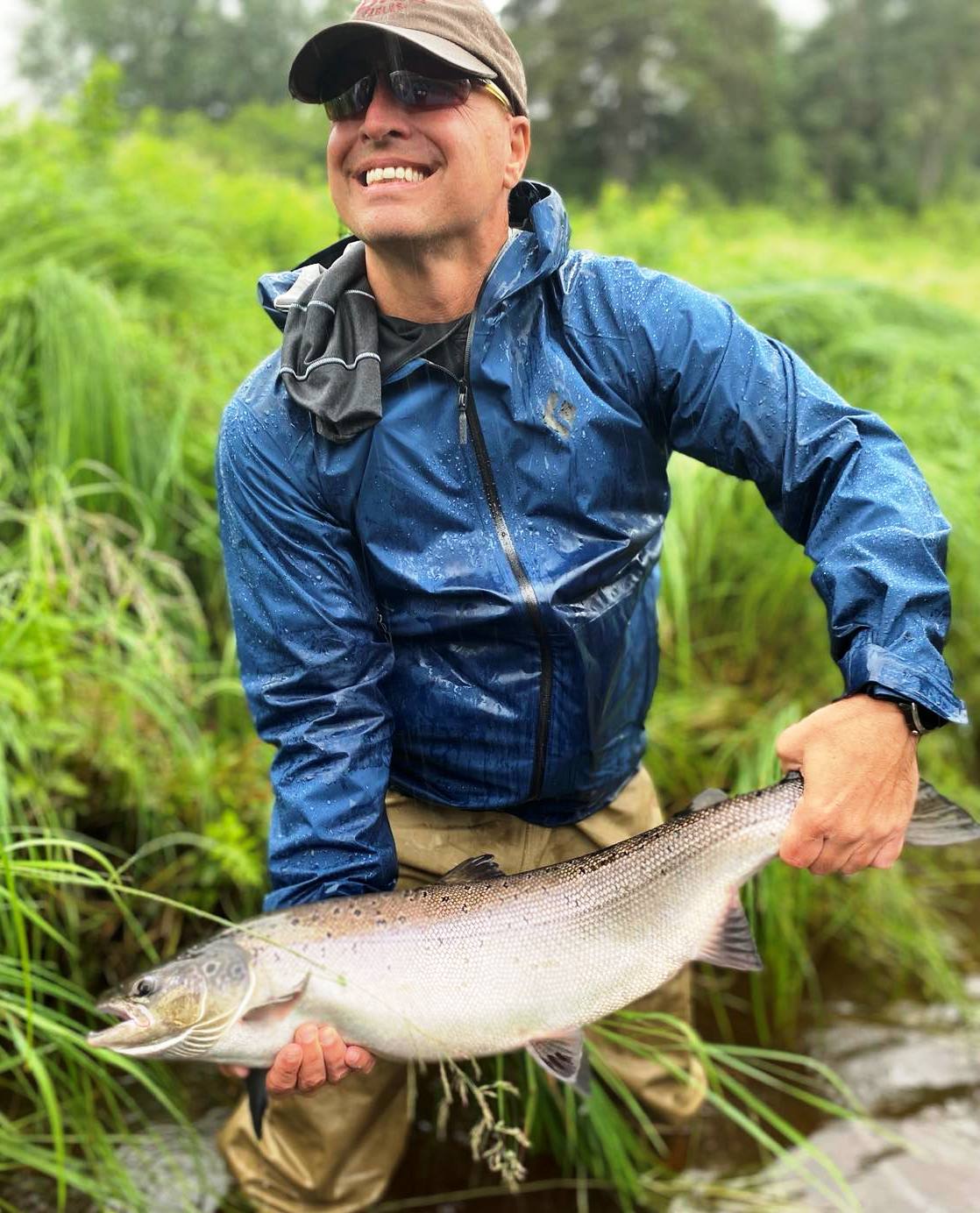
Country Haven angler Mike Bem came from Indiana to catch and release this Cains River salmon on 7/10/23.
Last year the smolt tagging work showed that only 3% of the tagged smolts made it out of the NW Miramichi. The percentage of untagged smolts that made it is undoubtedly much higher, but still the mortality has to be very significant. Stripers are spawning in both the SW and the NW, but clearly the most concentrated numbers are in the NW. From what I have read NW was recognized as the big producer of striped bass even back in the 1800s.
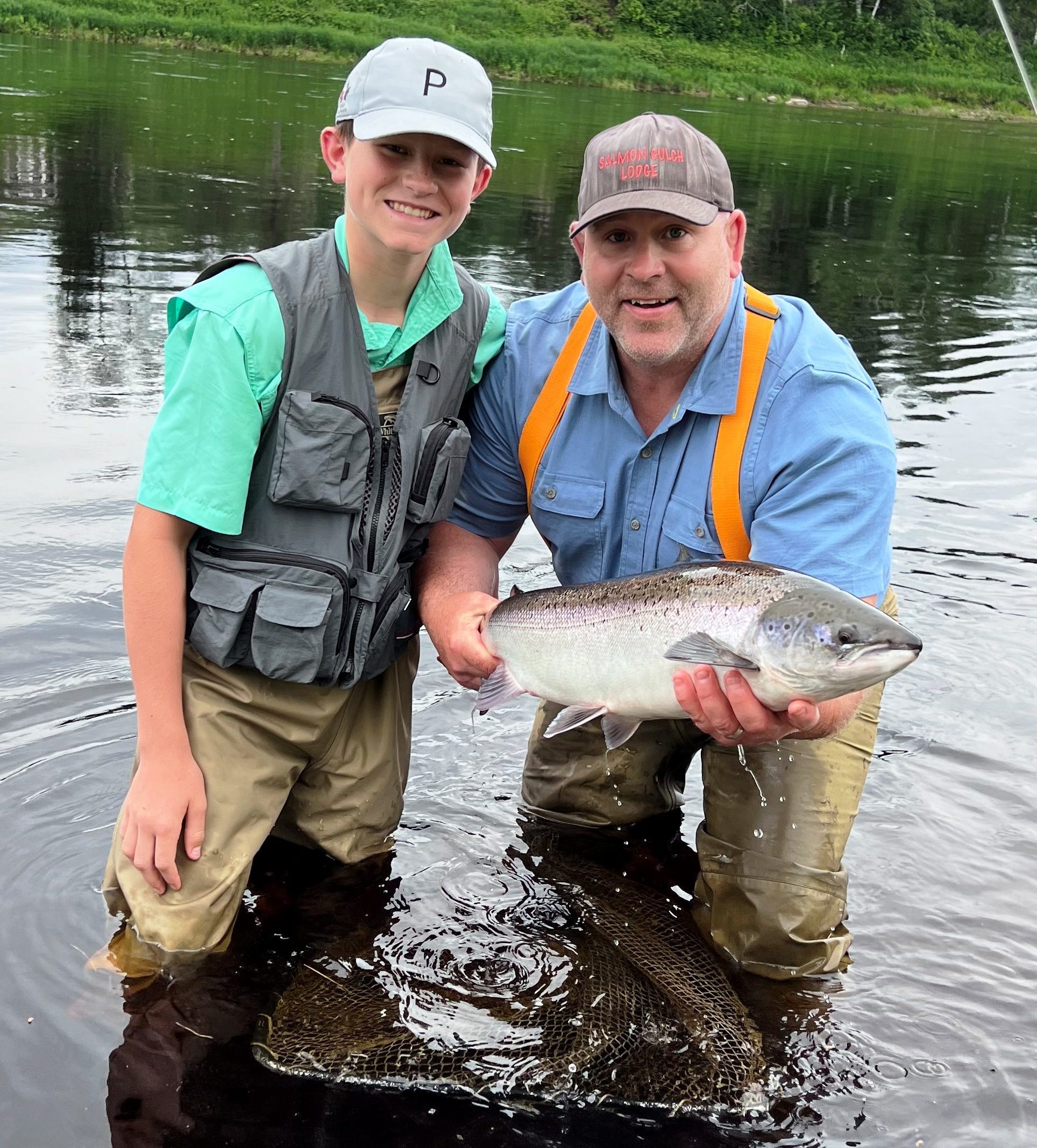
Jerry Seeley and his dad Scott netted my first dry fly salmon of 2023. Jerry had caught a slightly larger one the evening before.
Complaining about problems without offering a solution is useless. DFO has been lobbied hard to change course on salmon stocking and striper population control for years now. Fresh efforts are underway. Perhaps these startlingly bad numbers from the NW will get someone’s attention. In his response to my letters last winter Serge Doucet of the Moncton DFO office defended the huge striper population as benefiting anglers throughout the Gulf of Saint Lawrence. Maybe that is true, but a population a quarter the size of the current one would still provide good coastal fishing. And what about all of the anglers, salmon lodges and related businesses throughout the many, many miles of the Miramichi system and its branches? And what about the salmon itself? Isn’t it true that the Atlantic salmon fly by Warren Duncan, “The Picture Province” is an official symbol of the Province? Just because it is “the right thing to do” the salmon and striped bass should exist within the Miramichi system in some sense of historic balance. It doesn’t need to be a ridiculous abundance of one while the other just barely survives – or worse.
On the brighter side salmon fishing is pretty darn good right now on the SWM; high water, striped bass and all. At Campbell’s our total rod catch through July 8 – my last day fished – was exactly the same in 2023 as in 2022. While it is completely anecdotal, there is no question at all in my mind that we consistently had more fish that we didn’t land roll at and touch our flies than in other recent early seasons. I had 6 one morning alone in early July. I didn’t manage to land even one of them. That is just a casualty of high water and moving fish, instead of pooled up fish coming from their lies to strike with deadly accuracy. Let us hope that that the good run continues throughout the season. By all rights it certainly should. As MSA past president Mark Hambrook put it while fishing with me one day in June, “Without question the Miramichi has the finest Atlantic salmon habitat in the world.”
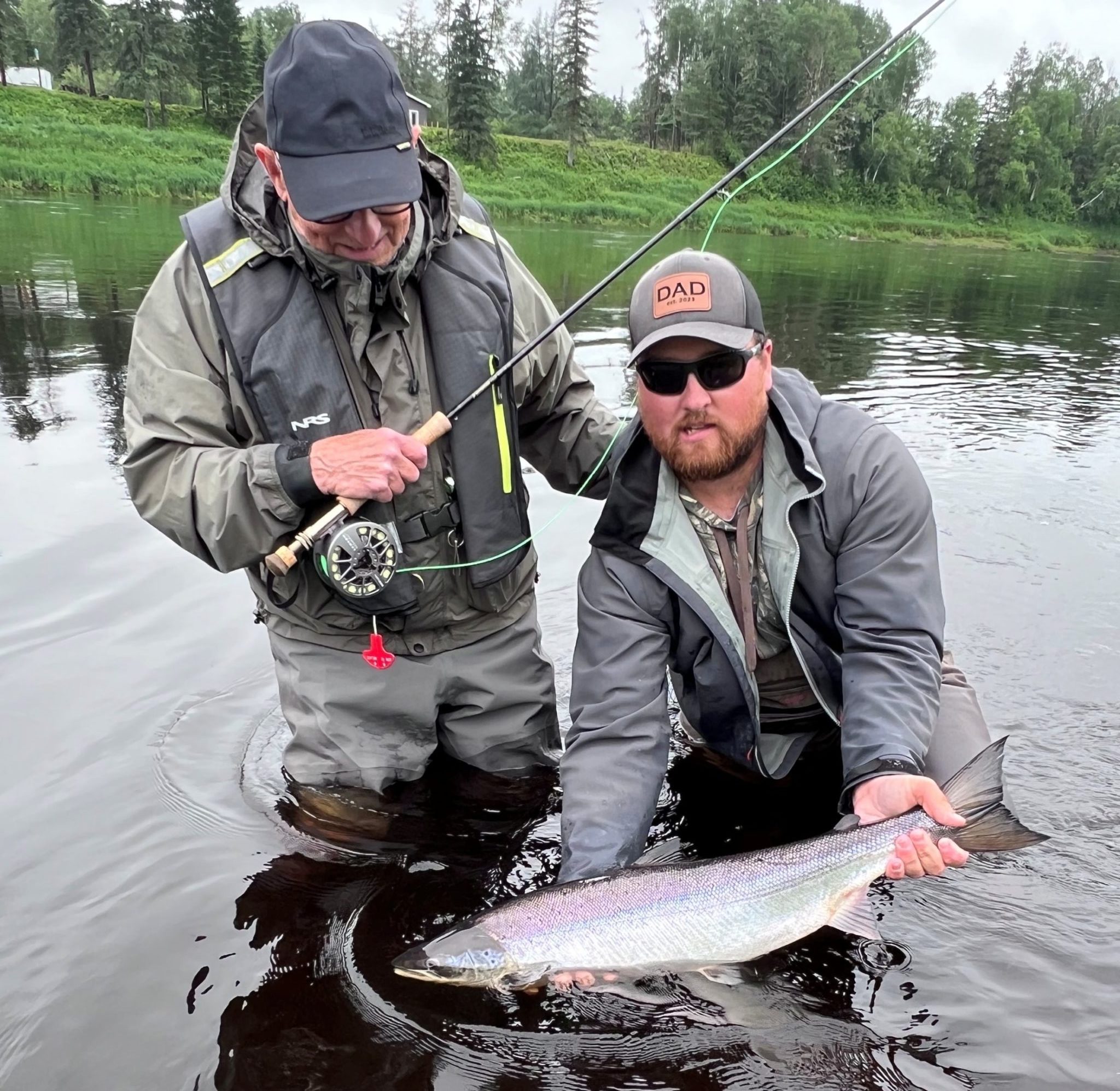
Jim Graul admires his salmon held by guide Tyler Coughlan. They are fishing on the finest Atlantic salmon river in the world.
As a final note, let’s all pledge to be careful with our fish releasing techniques.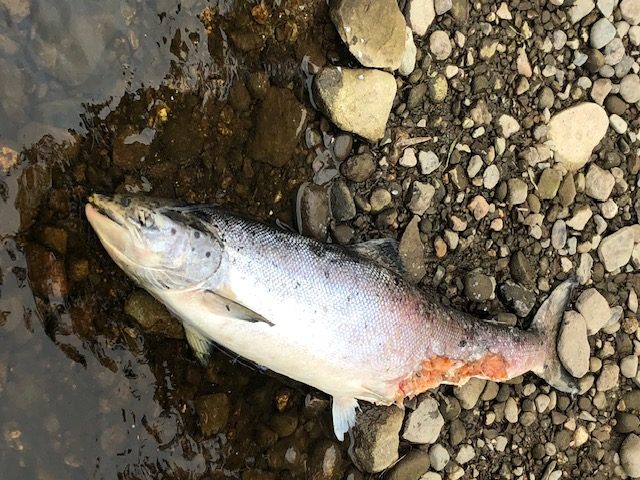 Steve Smith, an independent New Brunswick guide and fly-casting instructor steversmith7@gmail.com sent in this photo of a salmon he found washed up on the shore where he was fishing. While one can’t be certain of the cause of its demise, it is highly likely that it was stressed by poor release tactics. The very simplest way to keep release mortality low is to keep the fish in the water. If you want to lift it out for a quick photo, then have everything ready and remove it from the water for just a few seconds. Additionally, it is important to push down the barbs on your hooks – and it is the law – so that valuable time is not lost getting the hook out of the fish.
Steve Smith, an independent New Brunswick guide and fly-casting instructor steversmith7@gmail.com sent in this photo of a salmon he found washed up on the shore where he was fishing. While one can’t be certain of the cause of its demise, it is highly likely that it was stressed by poor release tactics. The very simplest way to keep release mortality low is to keep the fish in the water. If you want to lift it out for a quick photo, then have everything ready and remove it from the water for just a few seconds. Additionally, it is important to push down the barbs on your hooks – and it is the law – so that valuable time is not lost getting the hook out of the fish.
Thanks for reading. Brad Burns


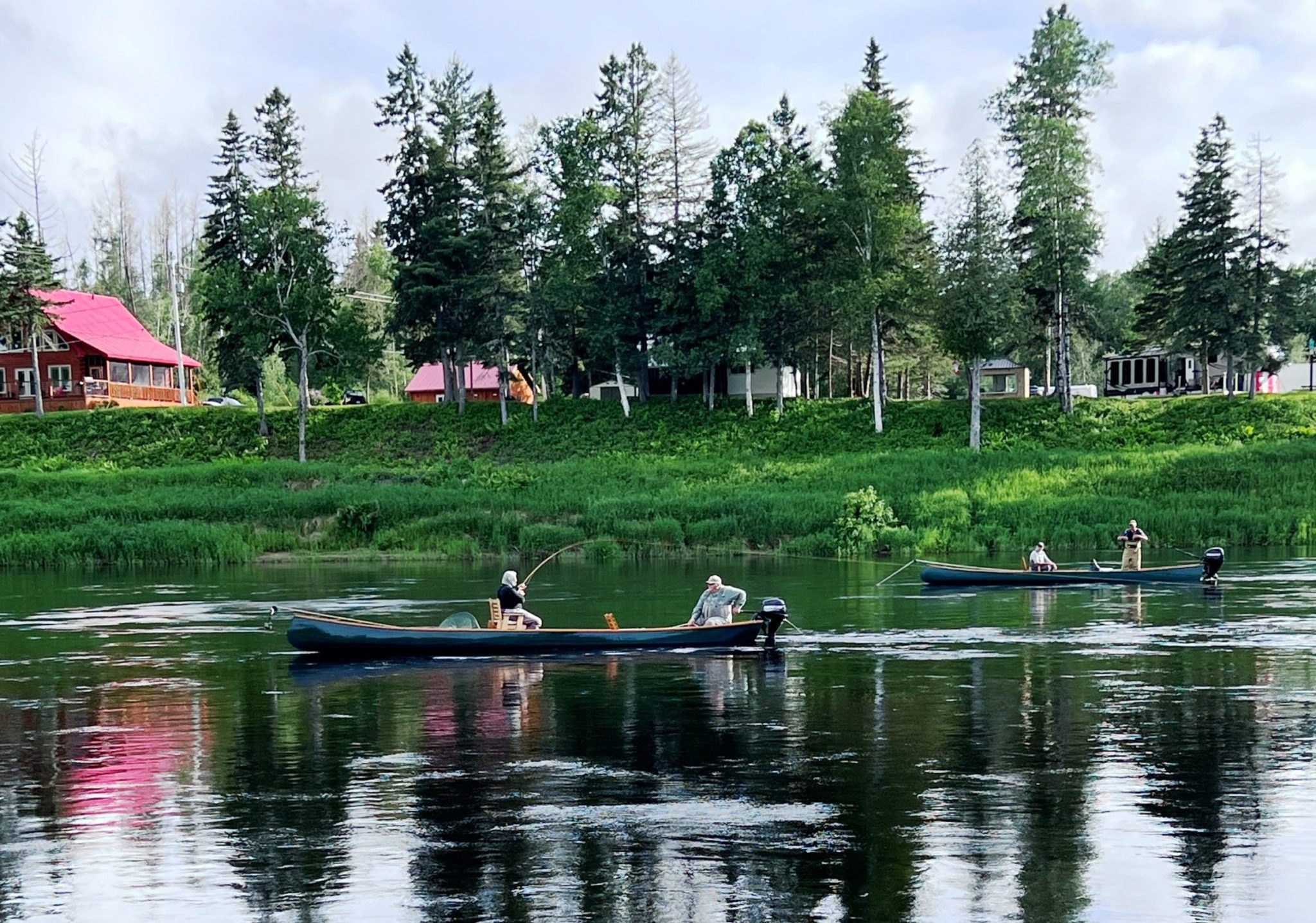
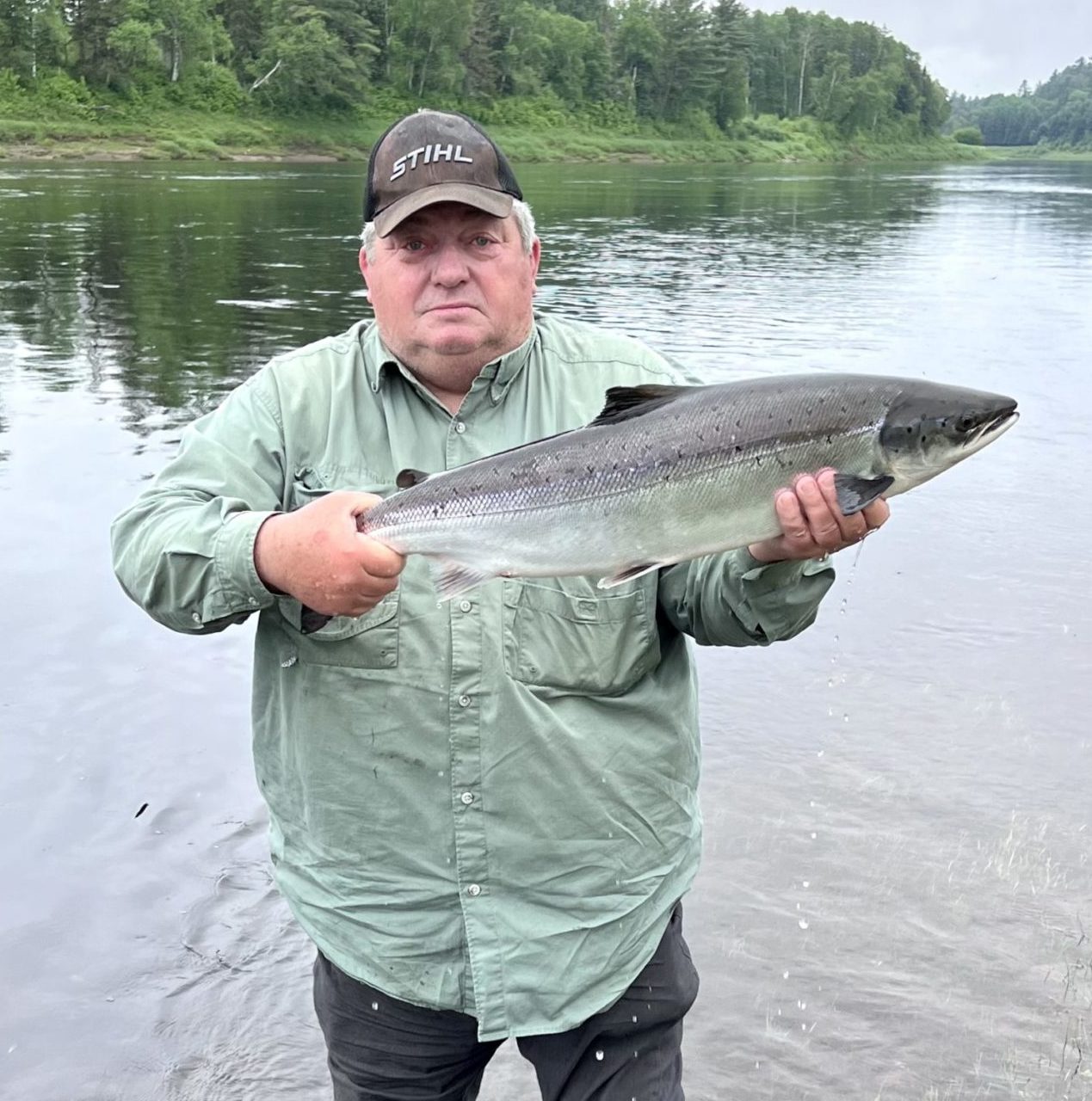
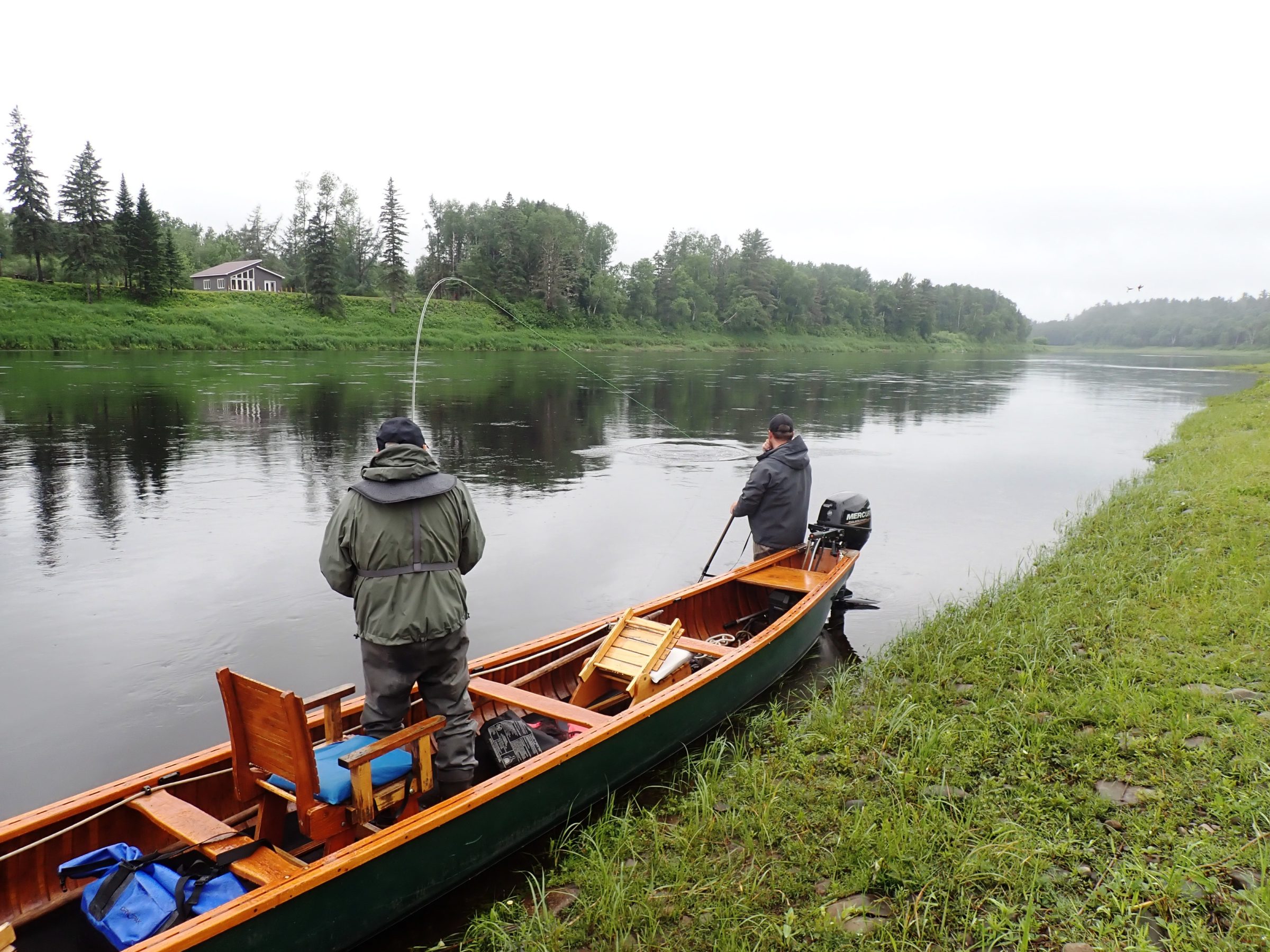
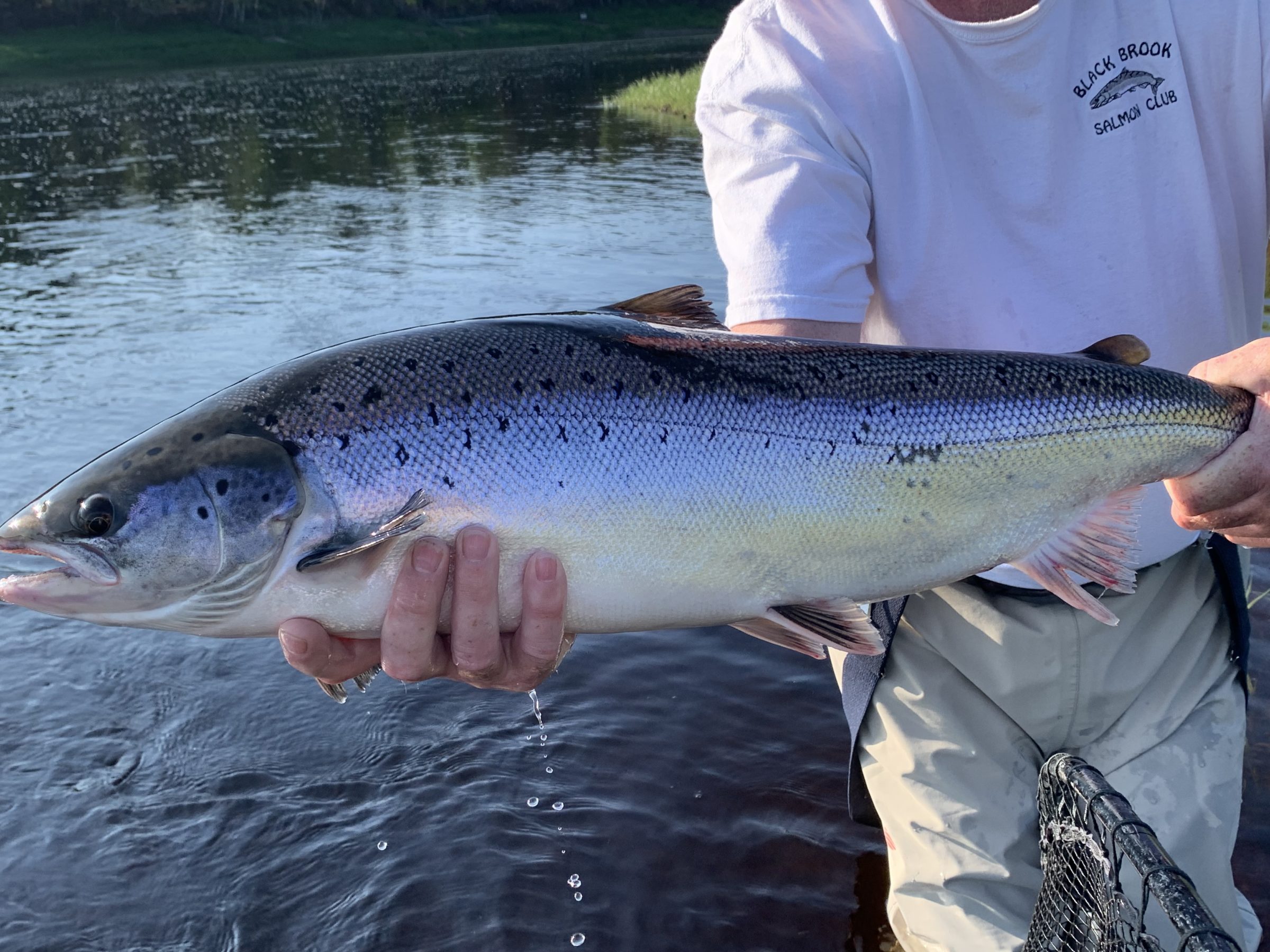
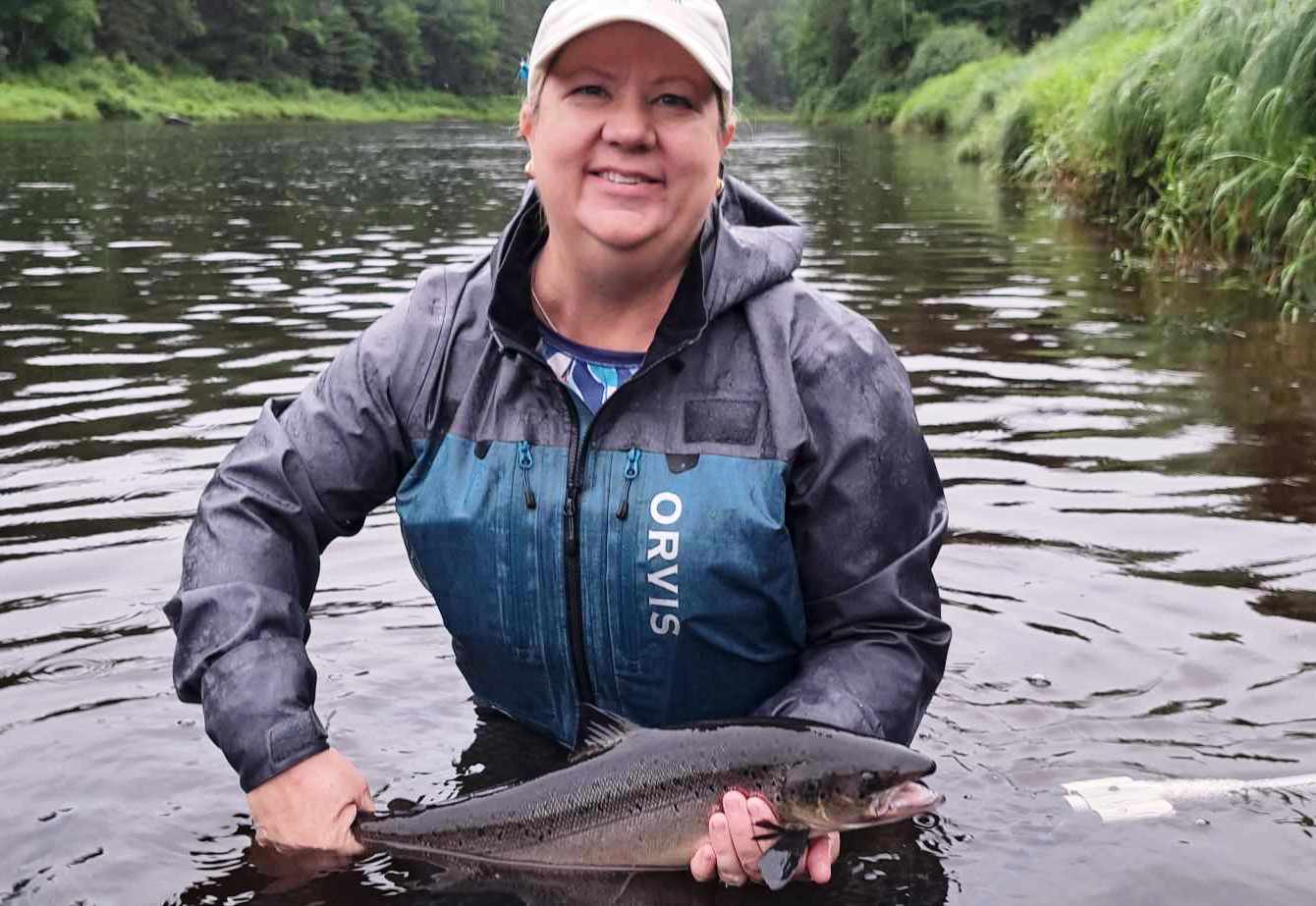
They’ll have to update the scenic drive signs for the Miramichi section to a striped bass.
LOL
Great report! Thank you.
Thanks Rick.
Brad, thank you for keeping all of us apprised of the happenings on the Miramichi. I don’t want to wish summer away, but can’t wait to get up there in September.
Casey – I’m headed for two weeks in Nwfld on Saturday. I won’t see the Miramichi again myself until September. I’m already looking forward to it.
Thanks so much Brad for all you do !
You are welcome.
Brad:
As always, great content and photos — appreciate the fine update… Joe
Thanks Brad for keeping us in the know. Seeing the photos of the Campbell Pool, sure brings back wonderful memories.
Wilf Hiscock
High praise, thanks Joe.
Thanks for your great report, Brad.
It’s nice to hear of salmon in those optimal, bigger water survival conditions away up the Cains etc. Something that was starting to happen when I was out in late June last year (fish moving into the Cains, usually known as a fall river) in the first summer weeks.
Henry – we were hoping for a crack at fish in Brophy, and I’m sure there were some there and well beyond there when we left, but the river was just far too high to fish. Last year and this one so far have really broken the mold of the Cains as a purely fall river.
I always enjoy reading your blog. Thank you for the effort you put forth for all the salmon fisherman. Much appreciated.
You’re welcome Jim. It is a labor of love as you can probably guess.
A pleasure to read as I sit at Ledges getting skunked. Great information.
Chris, I’m sorry to hear about your skunking… Ledges, by reputation has some good water, including a particularly productive stretch called Nelson Hollow. Keep casting! Brad
Great blog Brad and thanks for the plug but my email is:steversmith7@gmail.com for future reference,Steve
Hi There!
Im new to fishing and will be at Palisades Crown water next week.
Is the fishing closed? Should I check somewhere to find out?
If not, does anyone know what the fishing has been like there?